Insurance Platform Modernization Strategy Development
Company: USAA — Property & Casualty Insurance Group | Duration: 5 months
My Role: Principal UX Designer — User research when required, the end-to-end user experience, user testing, concept validation, and managing additional UX resources.
Team: 3 Designers, 1 Strategy Consultant, 1 Product Owner, 2 Product Strategists
Table of Contents
1. Overview
2. Creating a Starting Point (process diagrams)
3. Exploring the Future of Insurance Products (storyboards)
4. Conceptualizing Experience Improvements (wireframes & concept validation)
2. Creating a Starting Point (process diagrams)
3. Exploring the Future of Insurance Products (storyboards)
4. Conceptualizing Experience Improvements (wireframes & concept validation)
1. Overview
I identified process pain points, developed new concepts & features, and validated concepts to drive strategy and garner leadership buy-in.
The Property & Casualty Insurance Group was embarking on a technology platform modernization effort. Product Leaders needed help formulating and formalizing strategies to convince stakeholders they were making the right choices.
Audience and Users
• Property & Casualty Insurance Group Executives
• Stakeholders for each insurance product
Scope and Constraints
• The product development process
• Member insurance product experience
• Tight deadlines
The Problems
Utilizing an old technology platform led to a lack of product lifecycle strategies and a detailed product development process.
• The Insurance technology platform in place had been in use for over 30 years, and a limited number of qualified specialists could work on it.
• The lack of qualified specialists and the roadblocks of using old technology made creating new insurance products a multi-year endeavor that rarely happened.
• Product Leaders didn't see the value in maintaining strategies and process documentation because of how long the process took.
Technology and regulation created a culture resistant to change.
• The decades of being unable to make quick product releases made Product Leaders hesitant about significant experience changes.
• The Legal Department was highly conservative about the language and process for products and made exploring new ideas a challenging experience for Product Leaders.
2. Creating a Starting Point
Understanding the process provided Product Development Leaders with the context needed to create a strategy for integrating new technologies into the process.
Leaders in the product development process wanted to create a strategy for integrating the new insurance platform capabilities.
We detailed the 5 phases of creating a new product and identified 54 pain points in the current product development process, setting a base level of where we were.
• No documentation or artifacts detailed the current process for creating a new product.
• I needed to create artifacts that Product Development Leaders could use to identify opportunities for technology integrations.
• I facilitated an in-person workshop with cross-disciplinary stakeholders using sticky notes to collaboratively map out the phases and steps of the process, including Product Owners, Product Managers, Market Analysts, and Engineering Leads.
• I created 5 streamlined diagrams that detailed each phase of the current-state process at a high level.
Product Development: Design Phase Workshop Stickies
Product Development: Design Phase Current State Diagram
I created 5 future-state product development process diagrams to kickstart capability identification.
• Product Development Leaders needed to identify which new platform capabilities to integrate but needed the context of a future process.
• I was responsible for creating future-state versions of the 5 phases of the product development process.
• I collaborated with the Strategy Consultant to brainstorm how to update the process with new technology to address the pain points of the current process.
• I created 5 future-state product development process diagrams for the different phases that alleviated current-state pain points.
Product Development: Design Phase Future-State Diagram
3. Exploring the Future of Insurance Products
By exploring the future, we convinced Executive Leadership that integrating new platform capabilities into product development could drive product innovation.
• Product development leaders identified the new platform capabilities that could revolutionize the product creation process and improve the member experience but needed to convince Executive Leadership.
• I needed to categorize the capabilities to align them with the 5 product development phases and create storyboards showcasing how they could drive product innovation.
• I collaborated with the Strategy Consultant to identify capabilities to showcase and planned multiple cross-team workshops through Zoom with the Design Team and Strategy Consultant to conceptualize storyboards in Mural.
• The Design Team and I created 6 storyboards exploring how integrating 28 new platform capabilities into product development could drive innovation, leading to Executive Leadership support.
Storyboarding Collaboration Mural
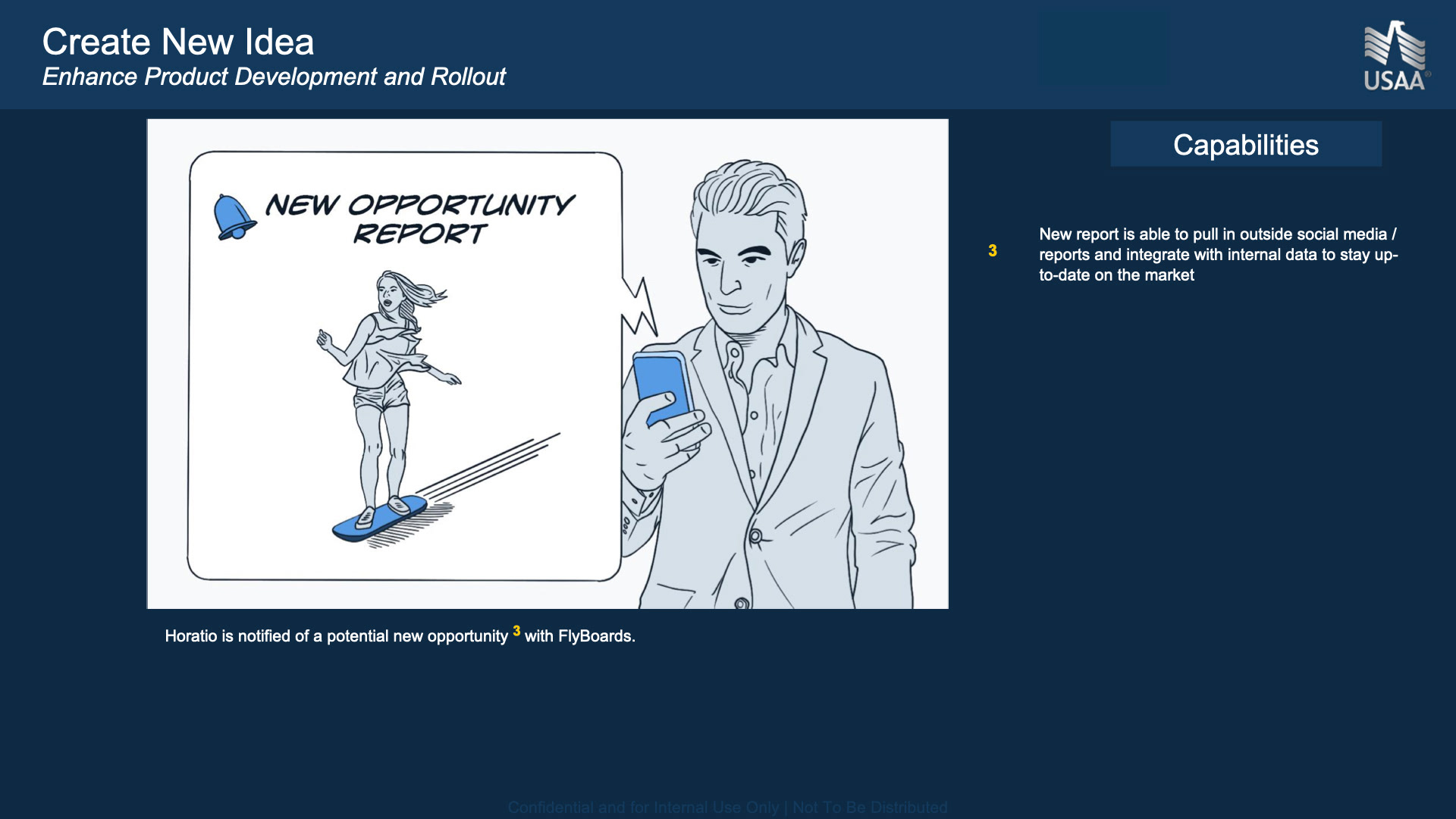
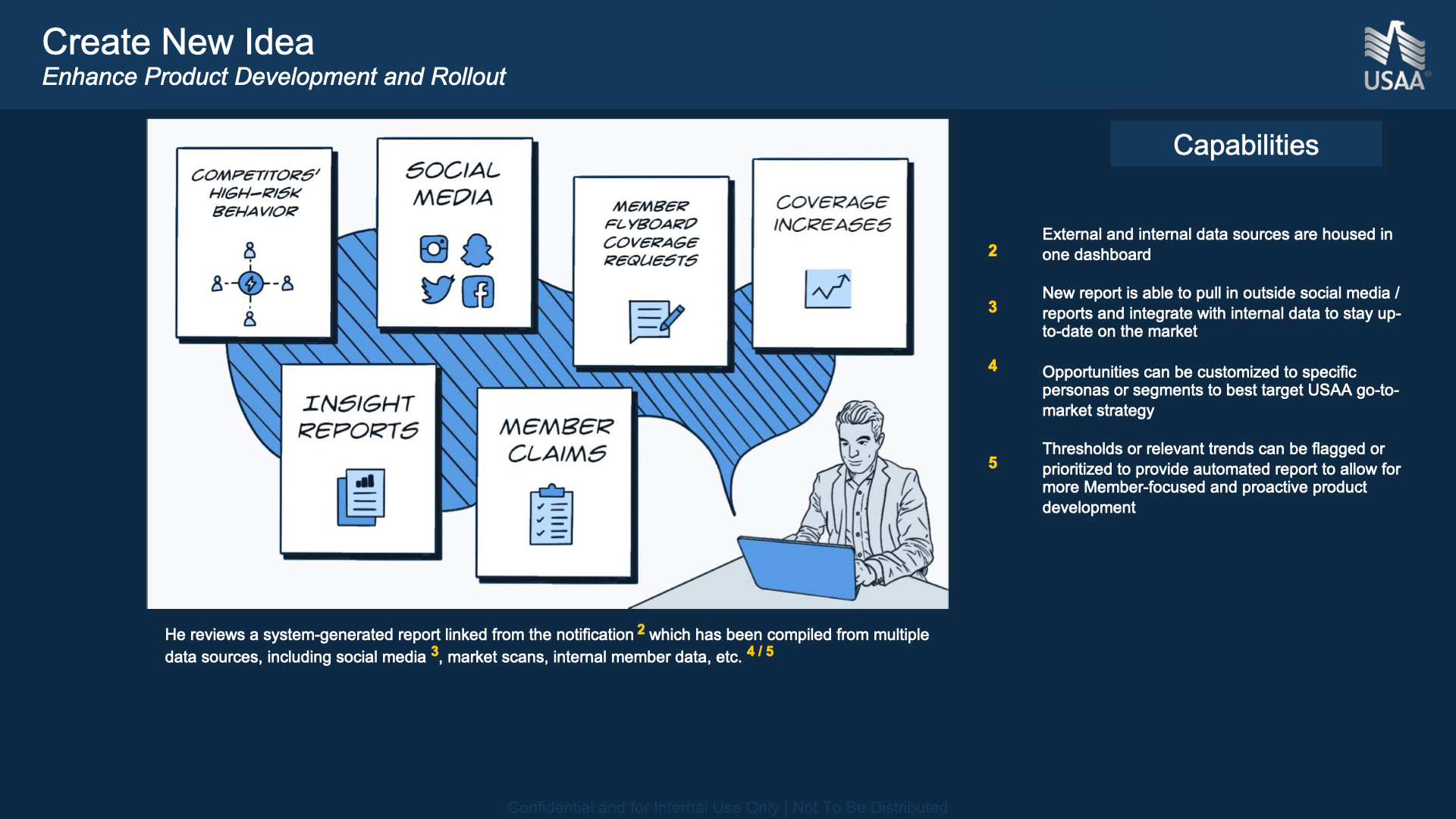



New Idea Storyboard Slides from Future State Visualizations Presentation
4. Conceptualizing Experience Improvements
Brainstorming and validating experience improvement concepts enabled leaders to create a strategy for transitioning products to the new platform.
A newly formalized Modernization Product Leadership team needed help creating their vision for and driving alignment with stakeholders.
Creating 3 notional design narratives incorporating the new platform capabilities drove stakeholder alignment and feature prioritization.
• The Modernization Product Leadership team wanted realistic examples of how technology updates could improve user experiences to help them identify and prioritize product features.
• I contributed to the Design Team brainstorming scenarios incorporating capabilities from the new insurance platform and provided feedback on the wireframes they created to visualize them.
• We collaborated in Mural through Zoom with the Leadership Team to identify scenarios and held week-long sprints to brainstorm and develop solutions for each scenario.
• The team created notional narratives through detailed wireframes that the Leadership team used to align Product Owners around their vision and feature priorities.
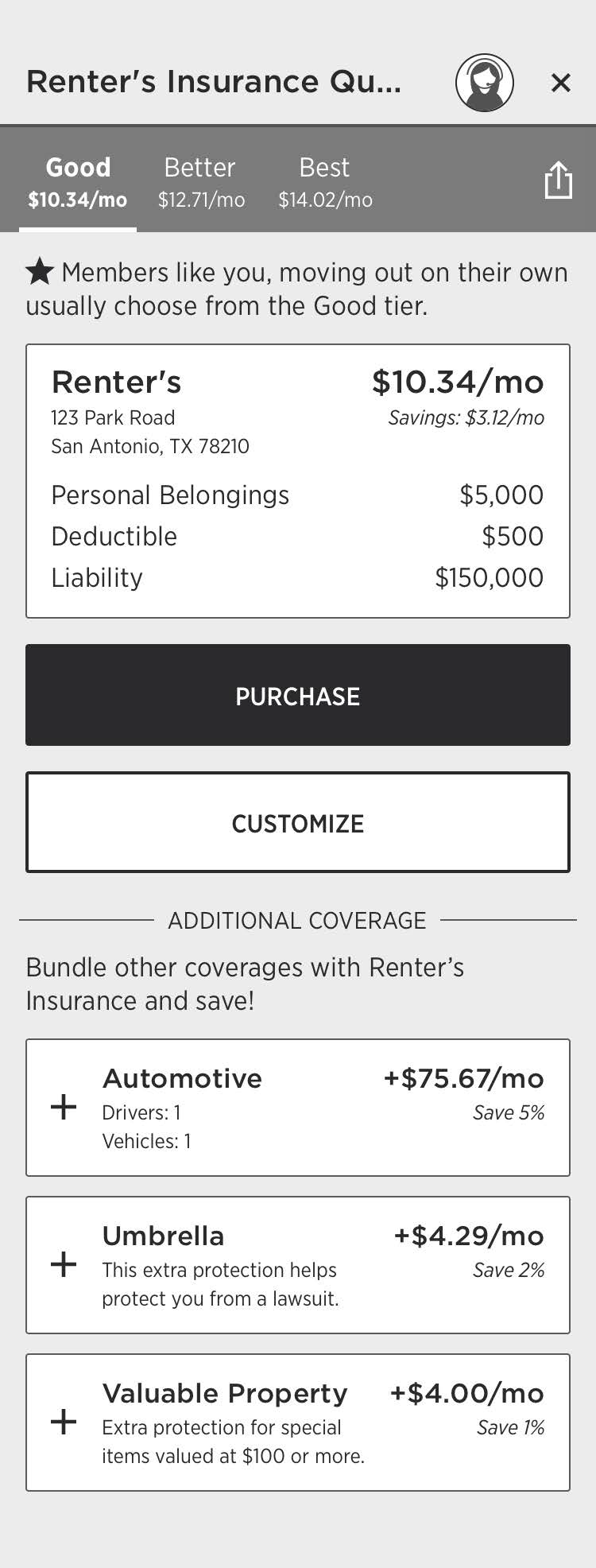

Wireframes from the Notional Design Narratives
Validating concepts through testing alleviated stakeholders' hesitation to commit to features that deviated too far from the current experience.
• The Modernization Product Leadership received pushback from some of the Product Owners over 4 features that significantly changed the user experience.
• To understand if Product Owners' hesitations were valid, I was responsible for leading concept validation testing and analyzing the results.
• I collaborated with another designer to create the protocol for an unmoderated Kano Model concept test, the testing prototype, and the report analyzing the results.
• We delivered a report that validated 2 of the feature concepts across 3 customer segments, garnering the buy-in needed to add them to the roadmap.
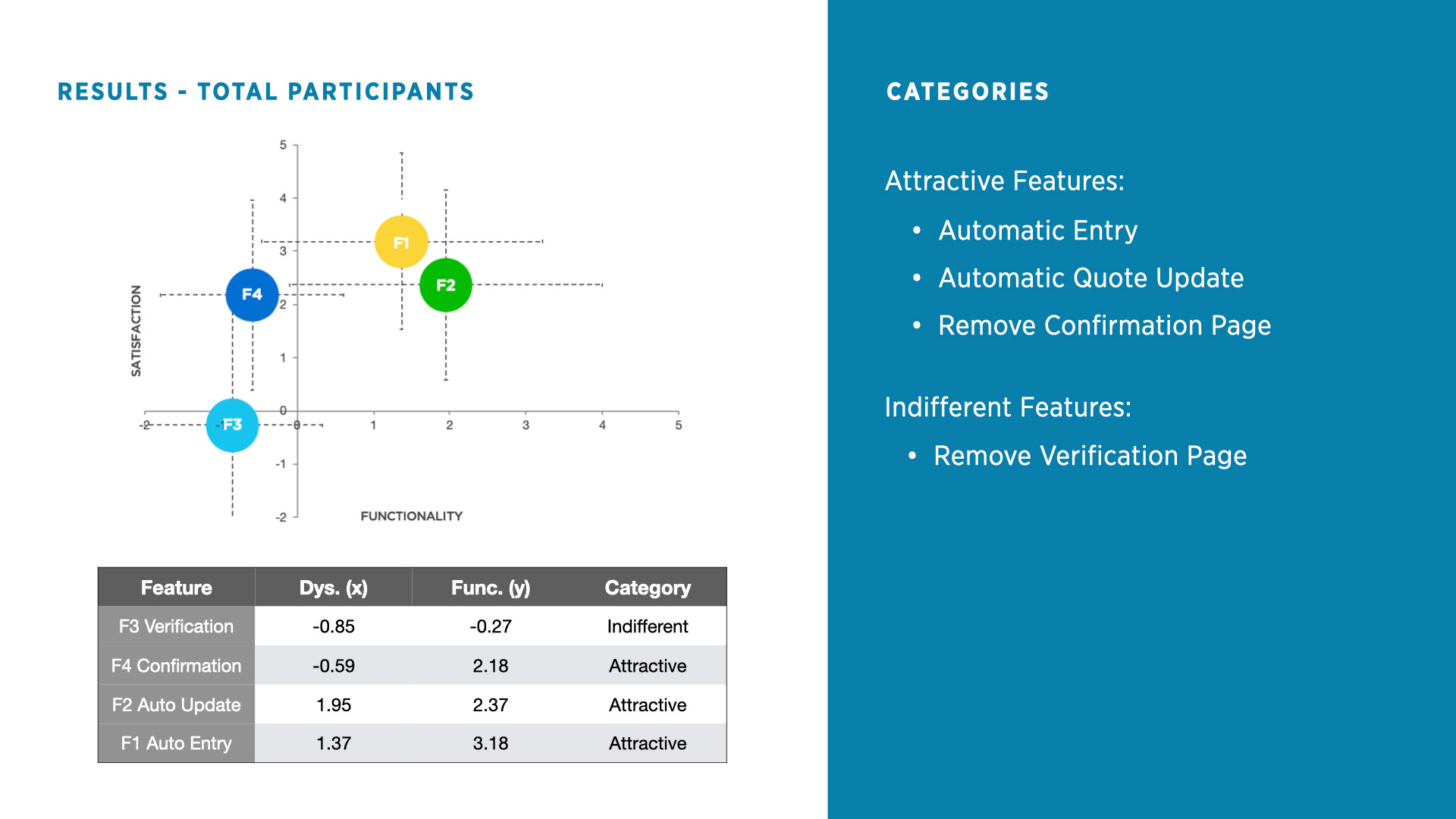
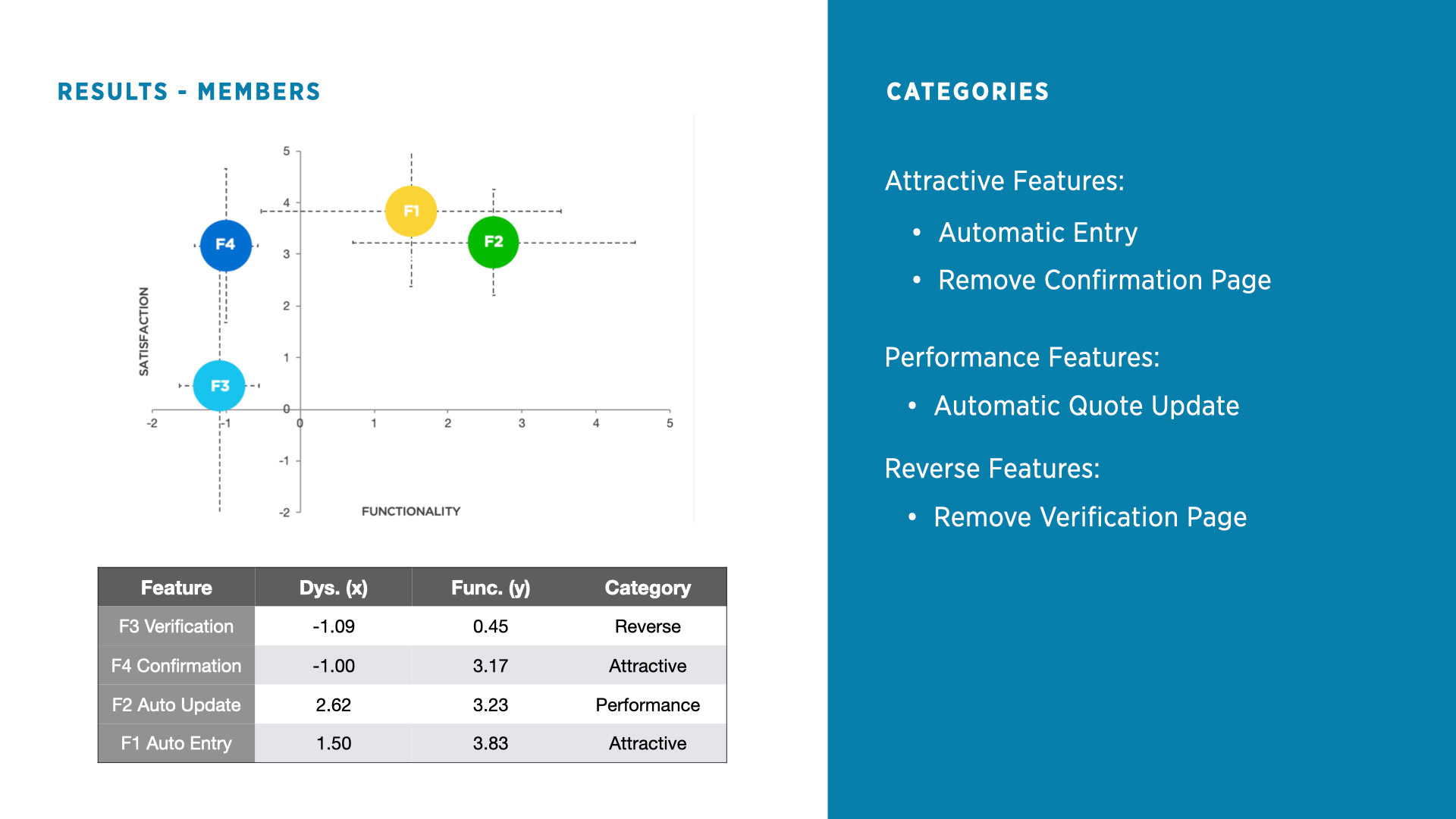
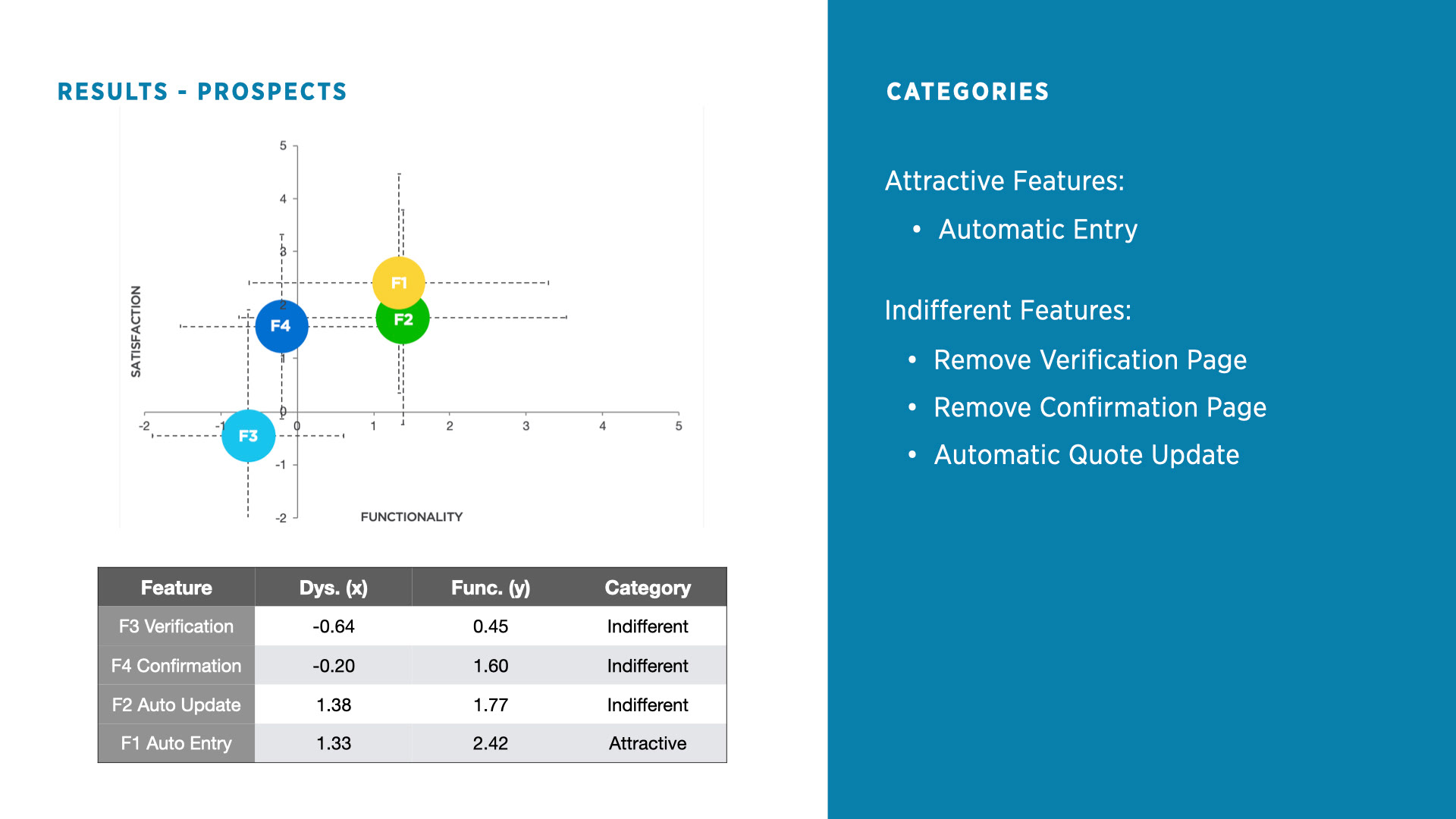
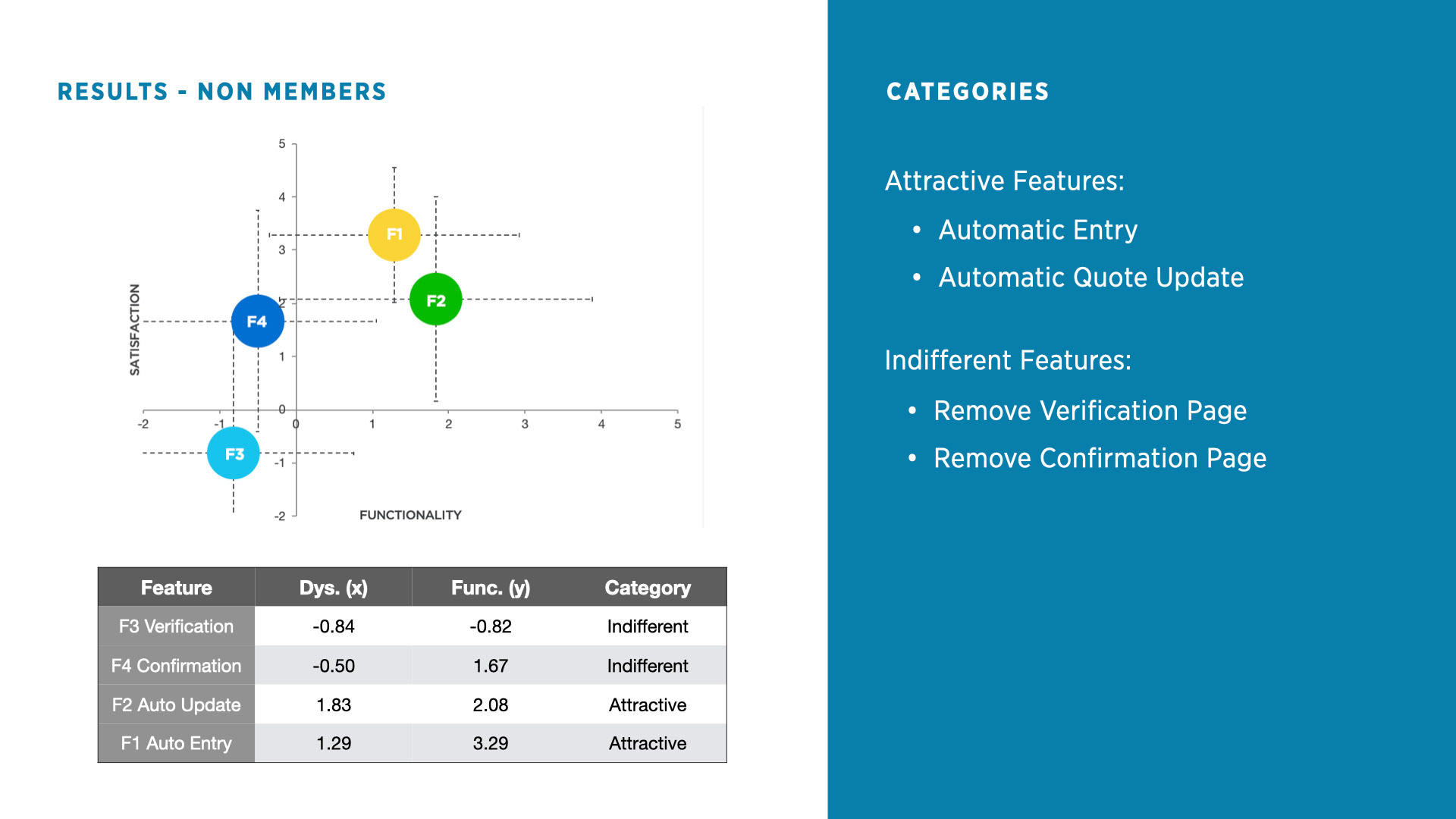
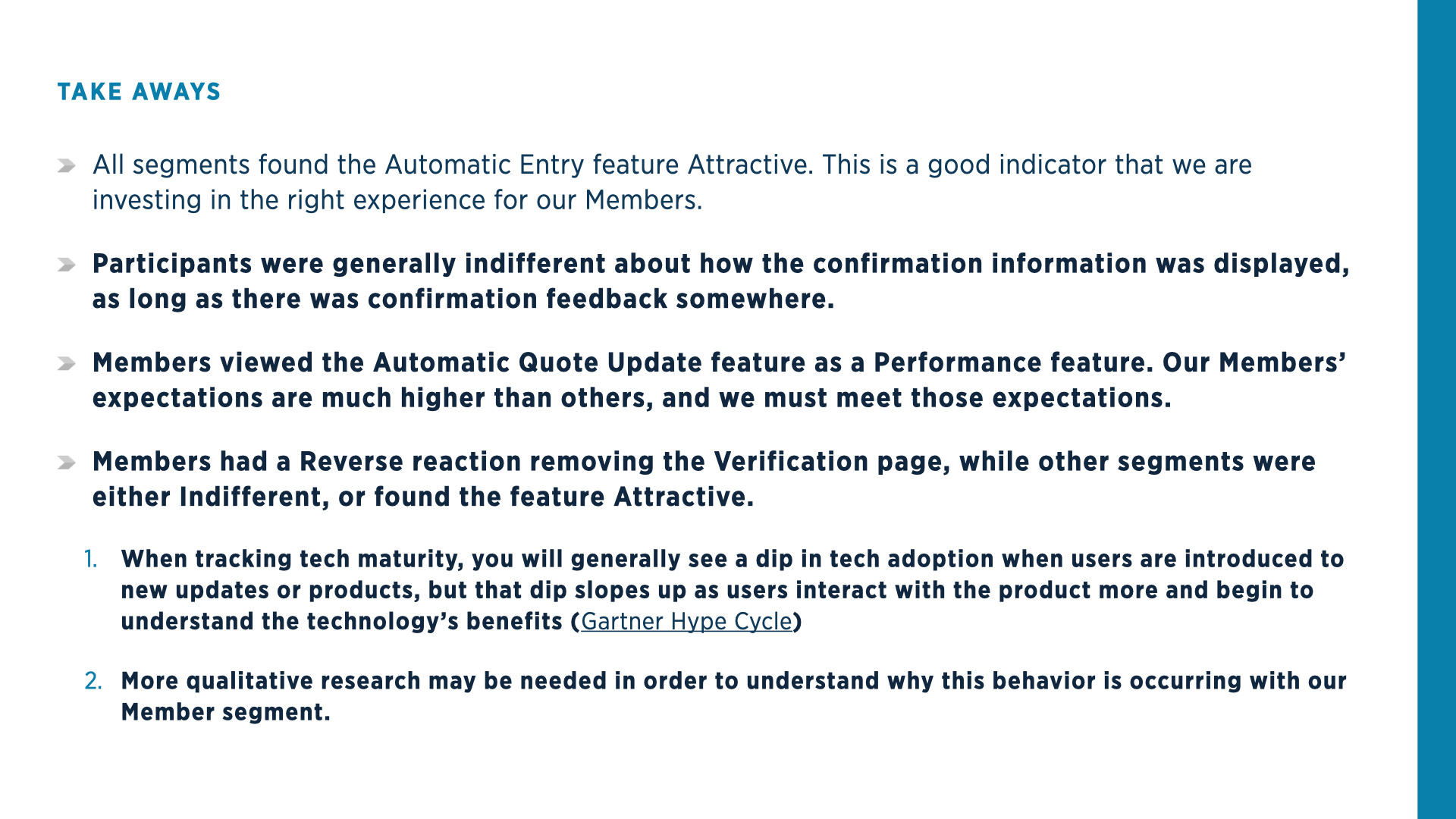
Results & Take Aways Slides from the Concept Evaluation Shareout
5. Post Project Assessment
What went well?
• We met tight deadlines to support the development of the Insurance Platform Modernization effort as priorities rapidly shifted.
• Many of the team's concepts survived multiple roadmap adjustments driven by shifting priorities and technology integration roadblocks.
What could have been different?
The capabilities we were using to brainstorm were what leaders wanted, but they never validated whether they were feasible with the new insurance platform they chose. We could have reassessed what was feasible and updated the capabilities accordingly if we had known.
